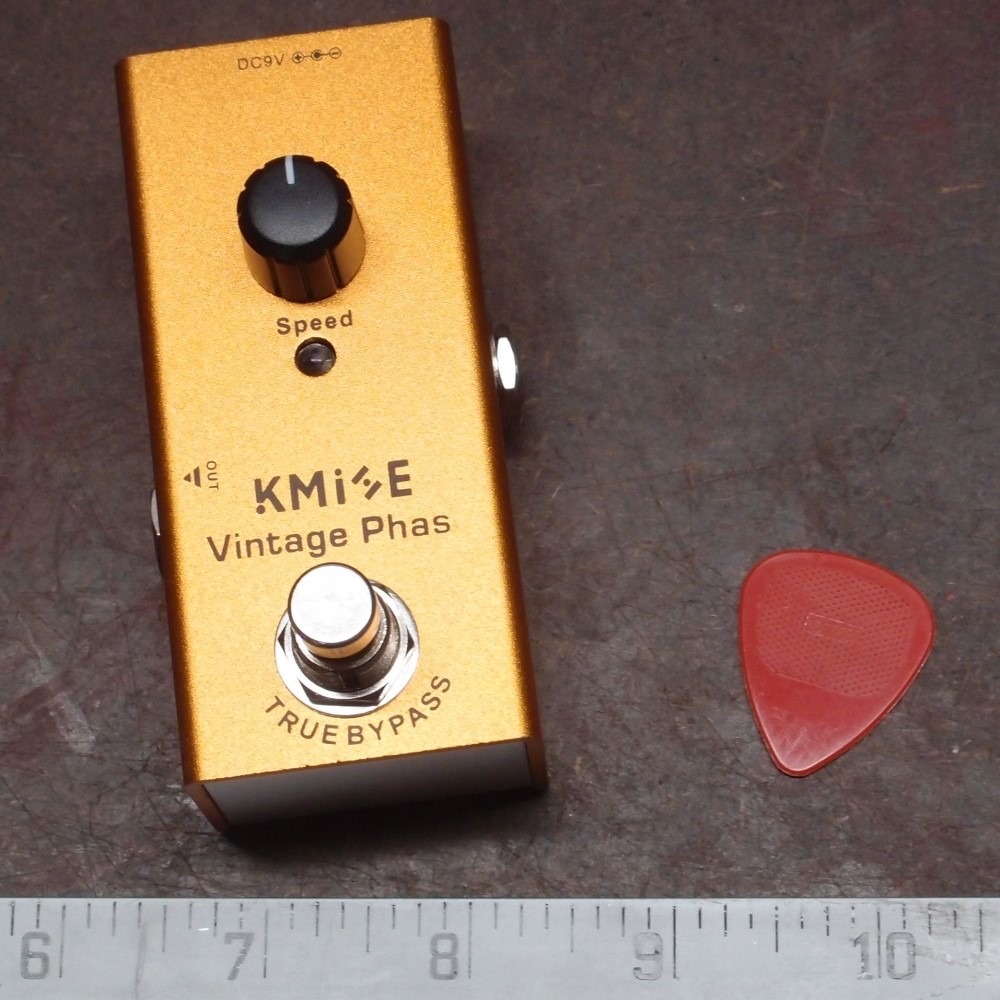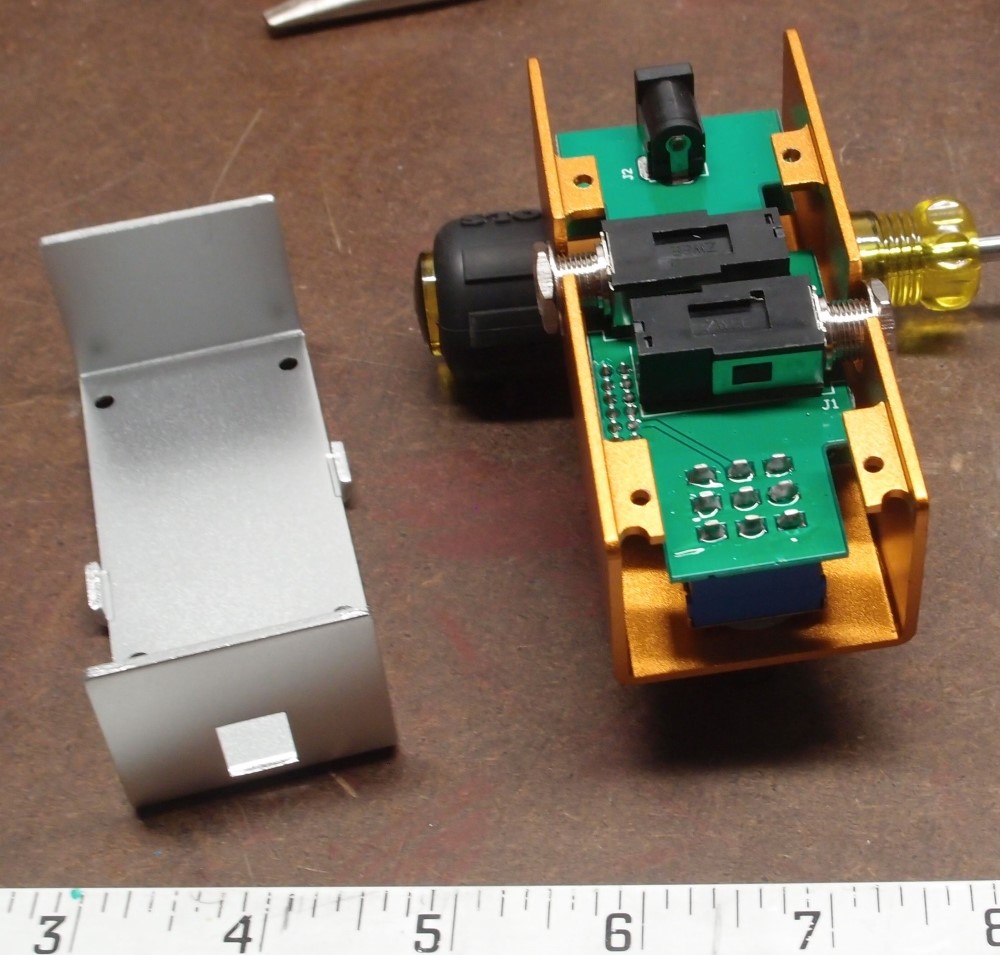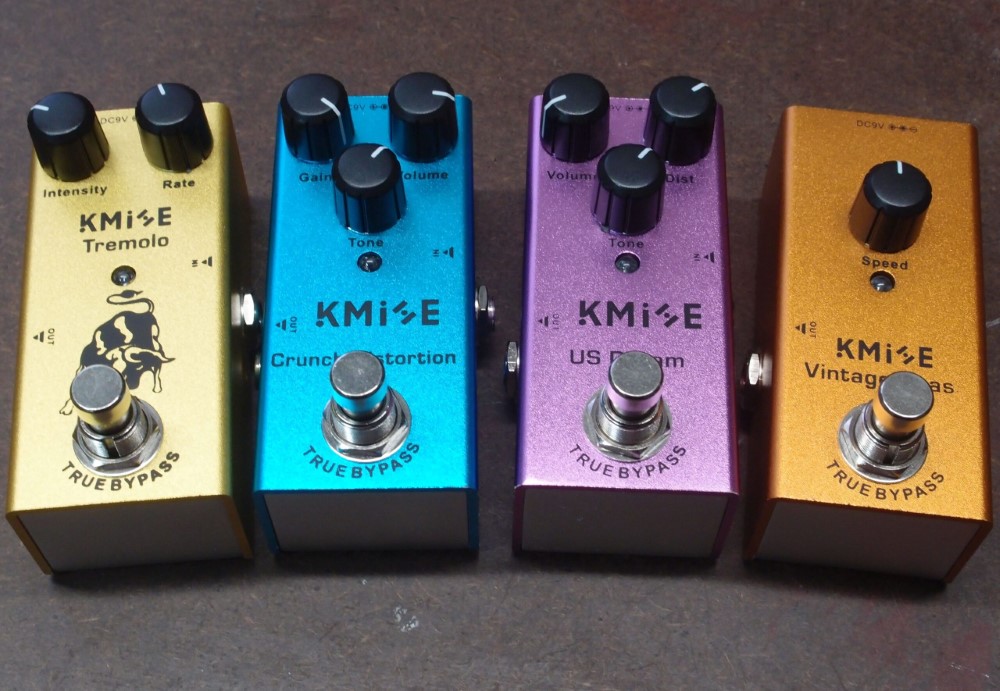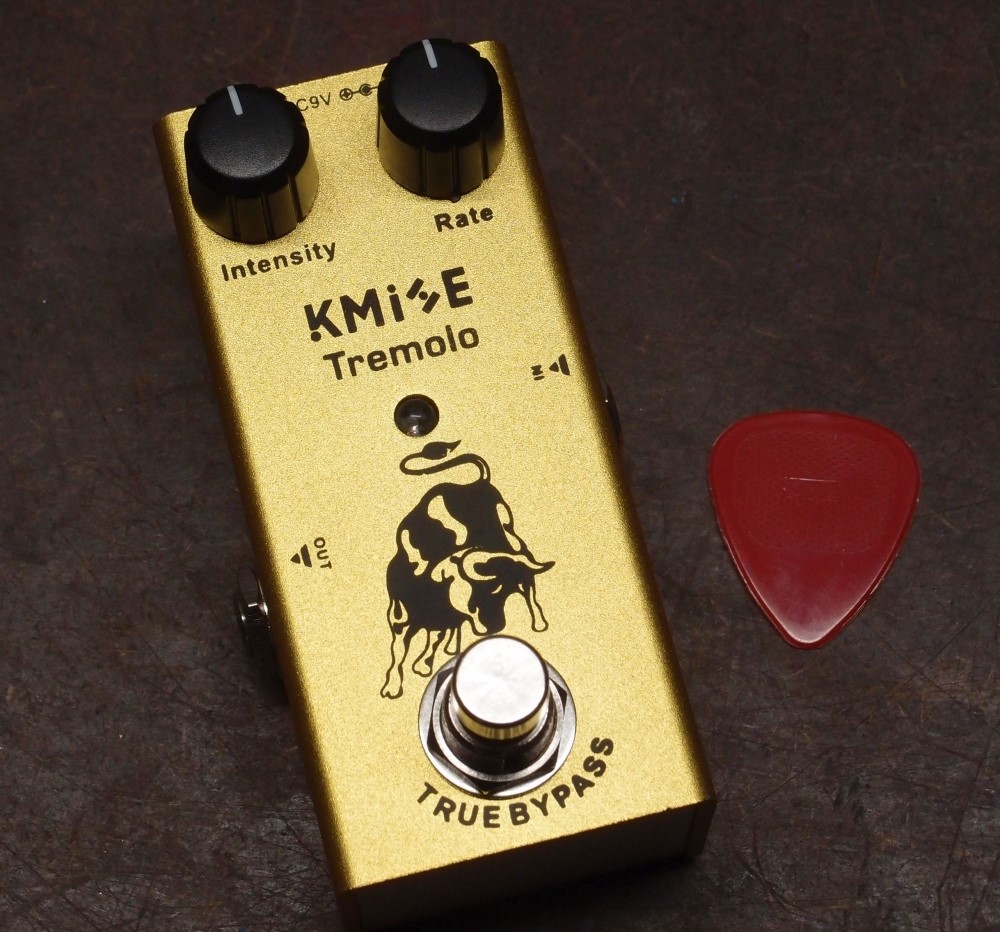November 27, 2019
KMise Vintage Phas Pedal
November 27, 2019

First, I am bound to state that I received this pedal at no cost for review. Having gotten that out of the way …
A phaser is a fairly simple device. It adds a swirling effect to the sound. Most 'classic' phasers have just a single control for the speed or rate of the effect. The only other control on this pedal is a mechanical true-bypass switch. This effect cannot take a battery, you will need a 9v power supply, I recommend a 1Spot. Batteries today are expensive and very poorly made anyway.
Construction is good, with a strong two-piece anodized aluminum casing. All the controls and jacks are supported by the case, not the circuit boards. The only weakness is the plastic shaft of the knob, which could break if abused. That makes this pedal more suited for the studio or bedroom than the road.
When engaged, the pedal gives you the classic phas effect, with no noise or change in volume. There's just not a lot to a phaser. I have one other phas pedal, and the two are quite comparable, this one having a more pronounced effect and greater speed range. For the price, this pedal is a great value - good sound and good construction, small enough to fit anywhere.
Summary: I like this pedal.

Buy on Amazon:
https://amazon.com/gp/product/B07WT259KC/ref=ppx_yo_dt_b_asin_image_o01_s00?ie=UTF8&psc=1





